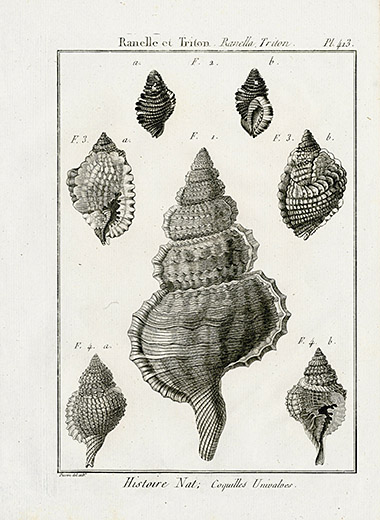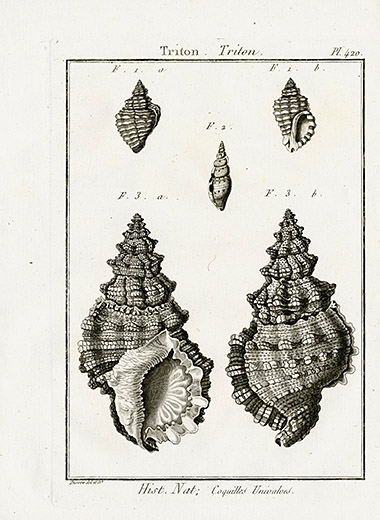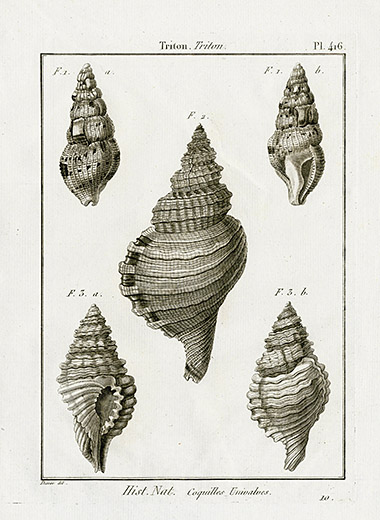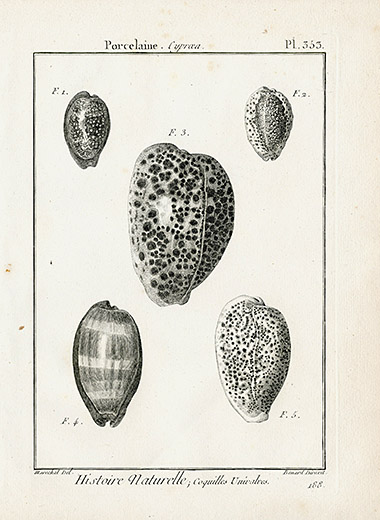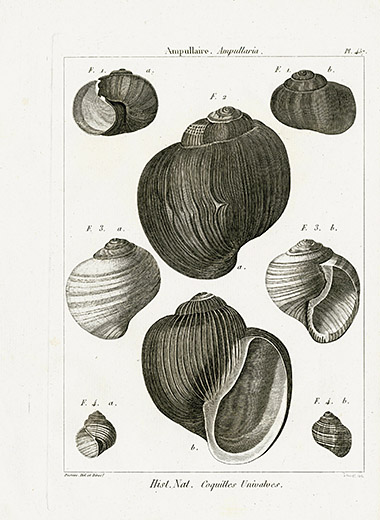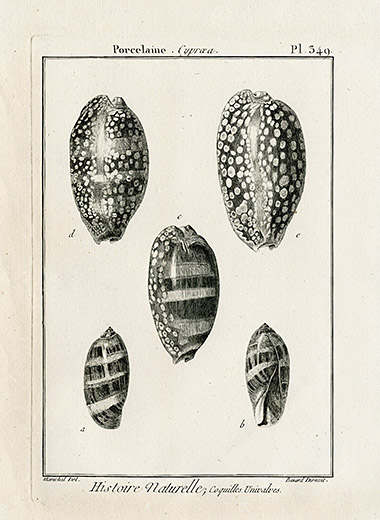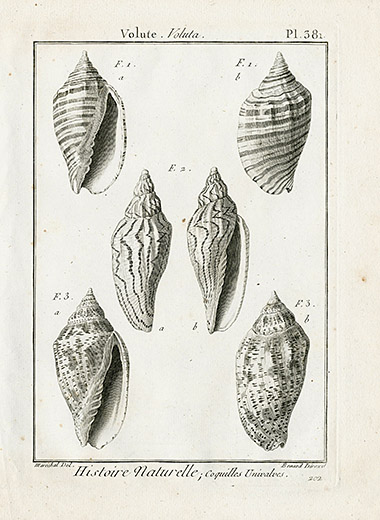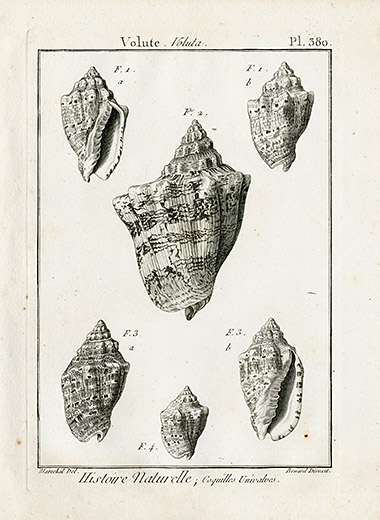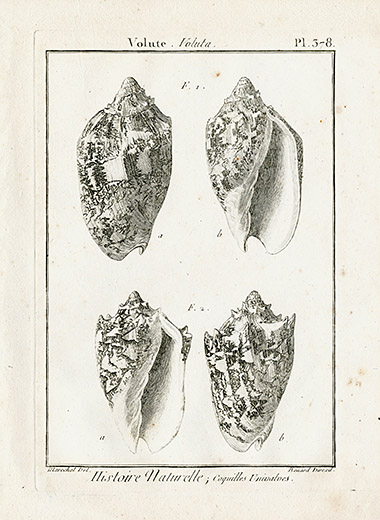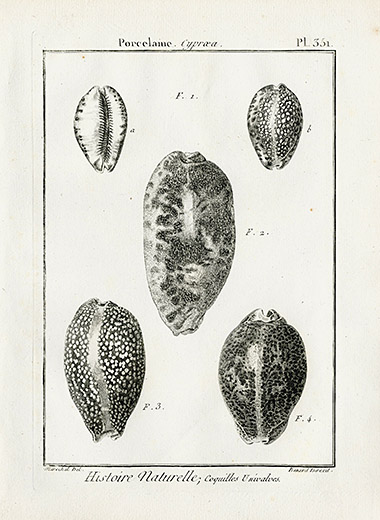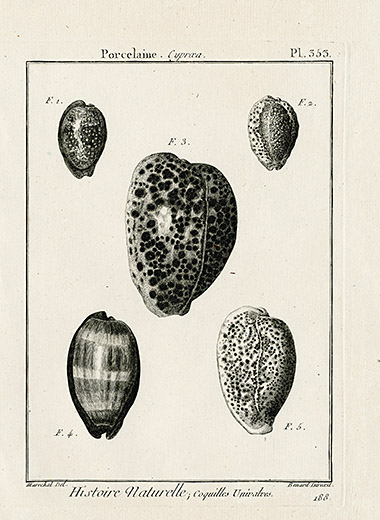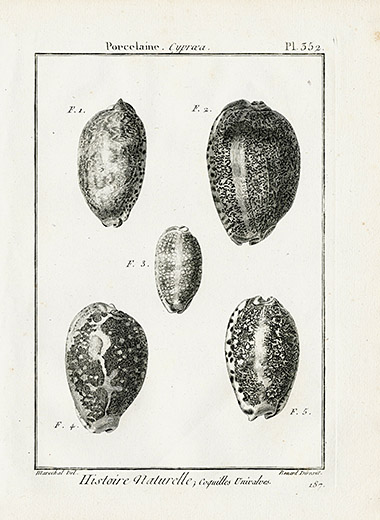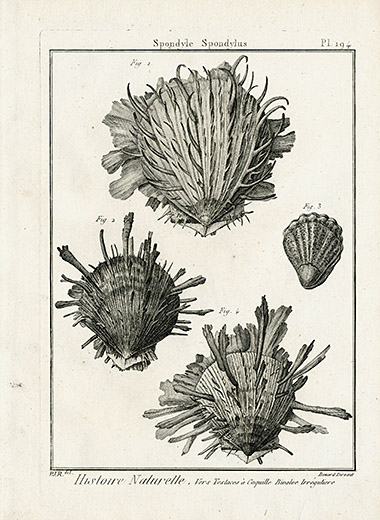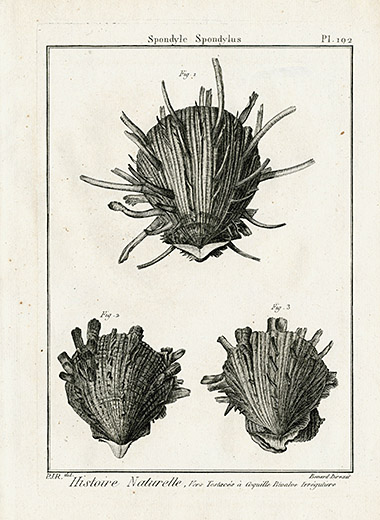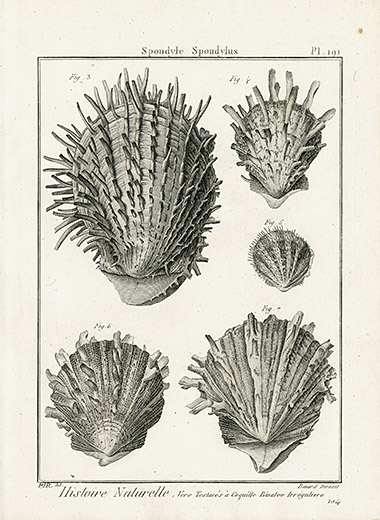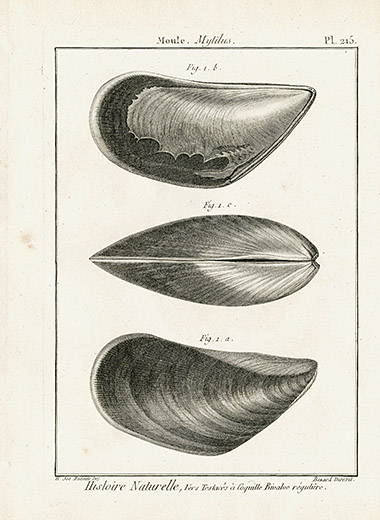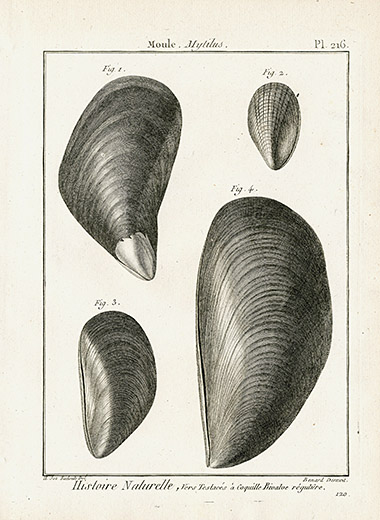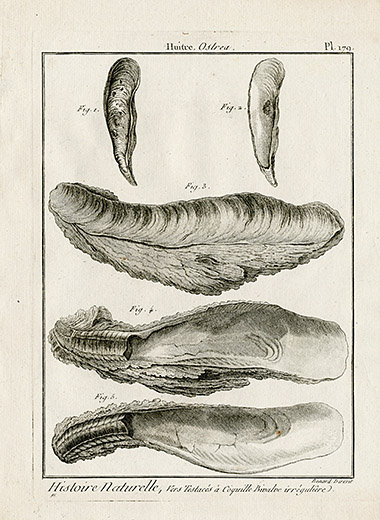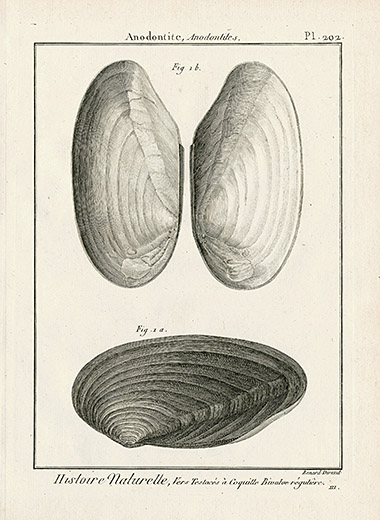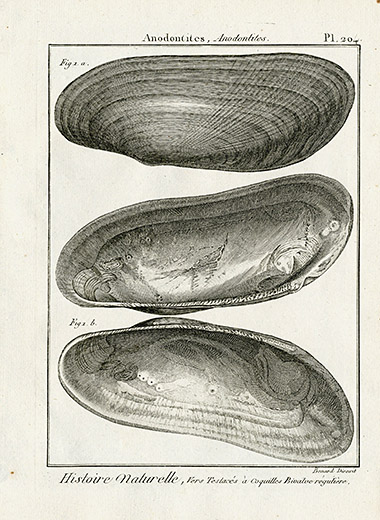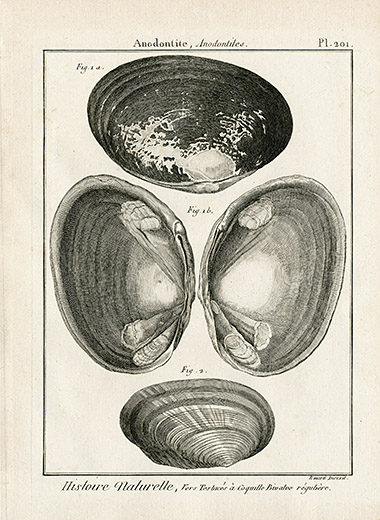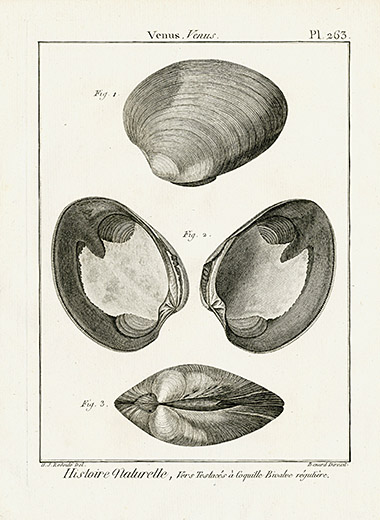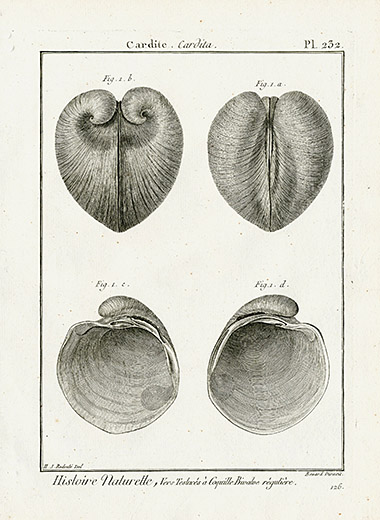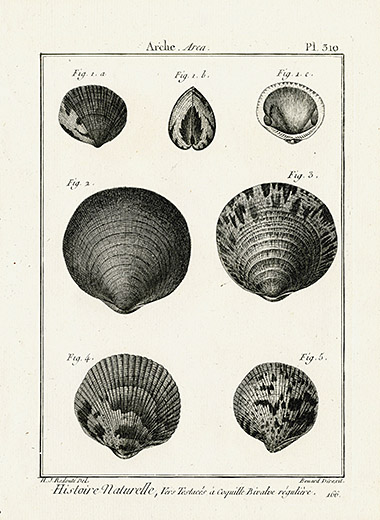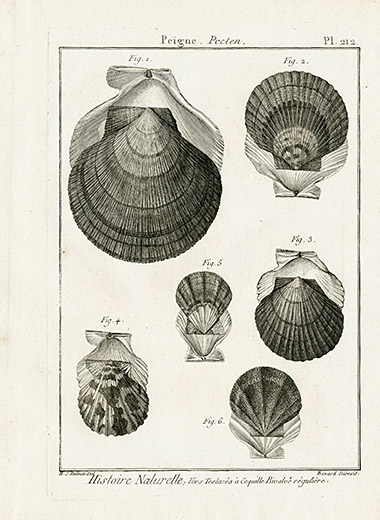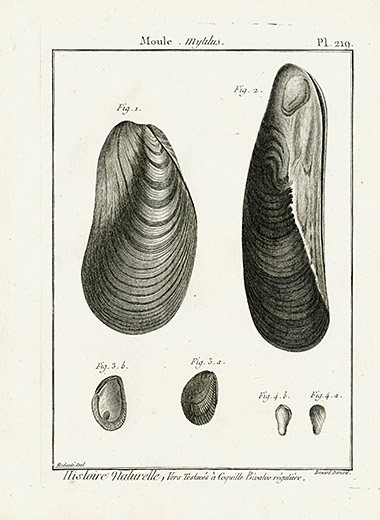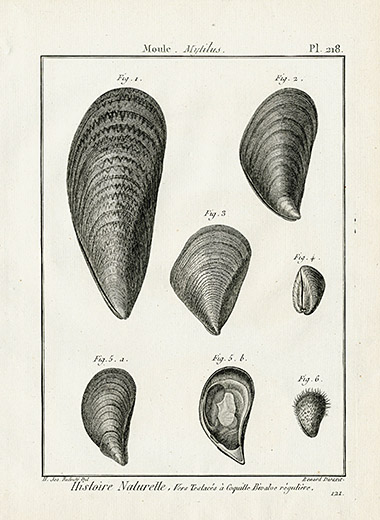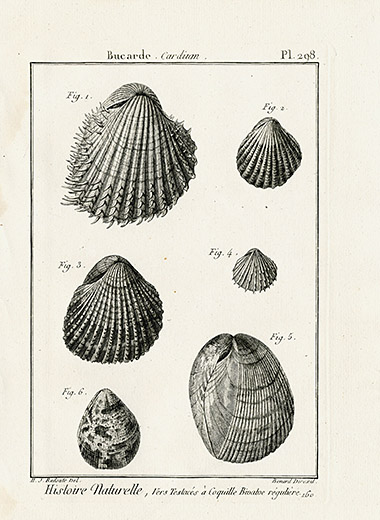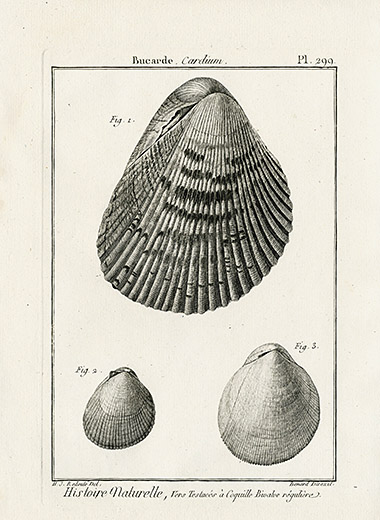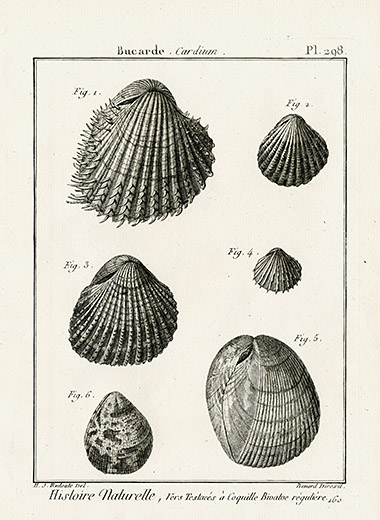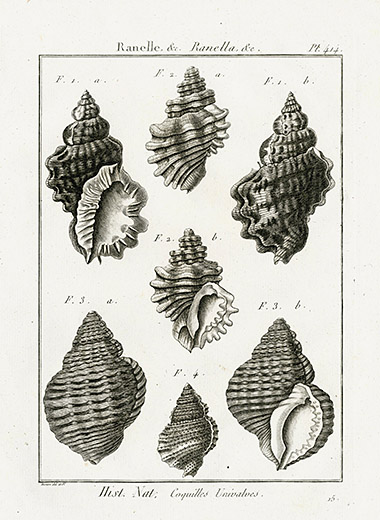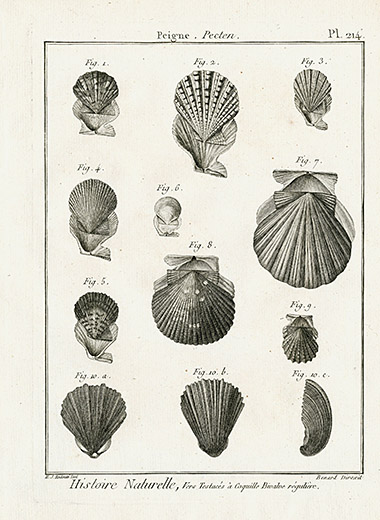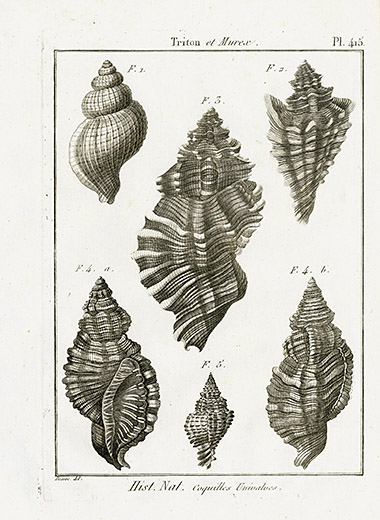|
This encyclopedic work spanning over 50 years and running to 201 volumes was the undertaking of an enterprising young publisher Charles-Joseph Panckoucke (1736-98), who got his start in the publishing world of the day by collaborating on the Encyclopedie of Diderot & d’Alembert. This latter work was to become a definitive record of the history of European thought and a remarkable reference for all aspects of eighteenth-century European civilization. From the onset, it was controversial, banned by the government & condemned by the Pope, causing it to become enormously popular.
We are offering prints from the volumes relating to Crustaceans, Shells, Sea Urchins, and a variety of sea creatures. These volumes were edited by Lamarck & Bruguiere. The backdrop of the publication was the French Revolution, when, in 1793 Louis XVI and Marie Antoinette went to the guillotine. It was a time of great transformation in France & the reorganization in a democratic manner of many of the establishments previously dependent on the whims of royal patronage. The old Jardin des Plantes became the Musée National d'Histoire Naturelle (National Museum of Natural History), run by twelve professors in twelve different scientific fields, one of whom was Lamarck.
Jean Baptiste Pierre Antoine de Monet, Chevalier de Lamarck, born in 1744 to a military family, attended a Jesuit seminary for a short period before becoming a soldier, retiring with a distinguished battle record. Lamarck began to study medicine and botany; in 1778 his book on the plants of France, Flore Française, was published to great acclaim, in part due to the support of Buffon.
Buffon secured him a post as an underpaid assistant at the Jardin des Plantes, from which position he was able to propose the transformation of the Jardin des Plantes into the Natural History Museum. In the grandiose manner of the day, he was appointed to the study of “invertebrates” a word which he coined & a subject about which he knew little at the onset. He also coined the word “biology”.
The invertebrate collections at the Musée were enormous and rapidly growing, but poorly organized and classified. The professorship of "insects and worms" was definitely the least prestigious. But Lamarck rose to the challenge of creating a new field of biology, publishing many works & writings throughout his long career. While the ideas involved were not Lamarck's own, he has come to personify pre-Darwinian ideas on evolution. Lamarckian evolution is now a discredited theory, but he was among the early scientist to entertain such theories & Darwin recognizes him in the Evolution of the Species.
His work was never popular during his lifetime. Lamarck did not enjoy the respect or prestige enjoyed by his patron Buffon or his colleague & rival Cuvier, who attempted to discredit his theories. Lamarck struggled with lifelong poverty & lack of recognition for his contributions to science. When he died, on December 28, 1829, he received a pauper’s funeral, buried in a grave for five years & then dug up, probably to be placed among the huge quantities of bones stored in the catacombs of Paris.
It is with great pleasure that we offer these prints, which have undoubtedly been touched by those who participated in the French Revolution. Each single original antique print measures approximately 8 ½ inches by 11 ½ inches and the doubles 11 ½ inches wide by 17 inches long. The paper is a strong, soft white chain lined type, some with a French watermark. There is light mostly marginal foxing on a few, but the image area is generally clean & bright. Some were drawn by Redoute or his brother & are so signed in the plate. There is no descriptive text but a copy of the title page will be provided.
|


